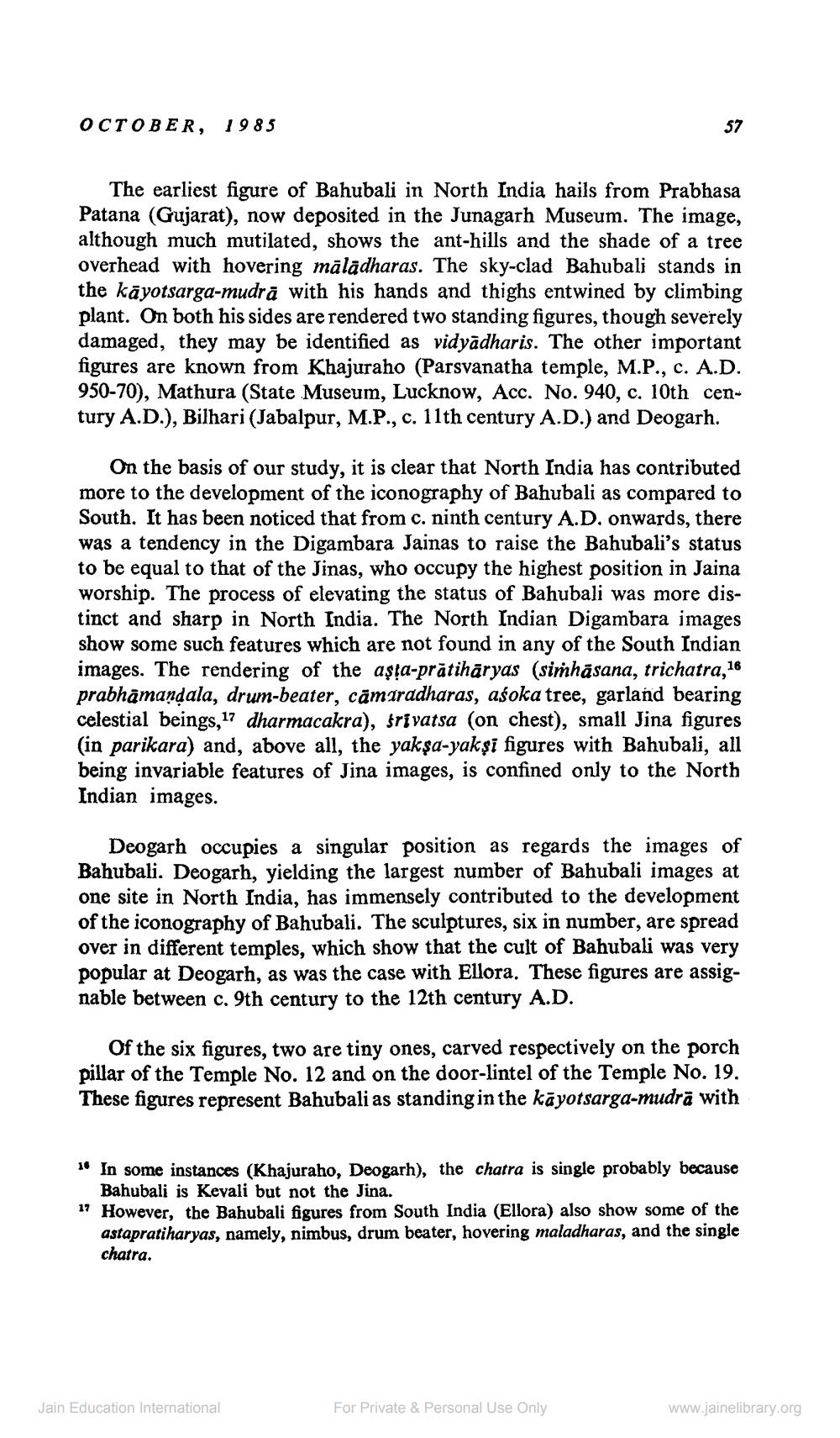________________
OCTOBER, 1983
The earliest figure of Bahubali in North India hails from Prabhasa Patana (Gujarat), now deposited in the Junagarh Museum. The image, although much mutilated, shows the ant-hills and the shade of a tree overhead with hovering māladharas. The sky-clad Bahubali stands in the kāyotsarga-mudrā with his hands and thighs entwined by climbing plant. On both his sides are rendered two standing figures, though severely damaged, they may be identified as vidyadharis. The other important figures are known from Khajuraho (Parsvanatha temple, M.P., c. A.D. 950-70), Mathura (State Museum, Lucknow, Acc. No. 940, c. 10th century A.D.), Bilhari (Jabalpur, M.P., c. 11th century A.D.) and Deogarh.
On the basis of our study, it is clear that North India has contributed more to the development of the iconography of Bahubali as compared to South. It has been noticed that from c. ninth century A.D. onwards, there was a tendency in the Digambara Jainas to raise the Bahubali's status to be equal to that of the Jinas, who occupy the highest position in Jaina worship. The process of elevating the status of Bahubali was more distinct and sharp in North India. The North Indian Digambara images show some such features which are not found in any of the South Indian images. The rendering of the asla-prātiharyas (simhāsana, trichatra, 16 prabhamandala, drum-beater, câmaradharas, aśoka tree, garland bearing celestial beings, 17 dharmacakra), srivatsa (on chest), small Jina figures (in parikara) and, above all, the yakşa-yakşi figures with Bahubali, all being invariable features of Jina images, is confined only to the North Indian images.
Deogarh occupies a singular position as regards the images of Bahubali. Deogarh, yielding the largest number of Bahubali images at one site in North India, has immensely contributed to the development of the iconography of Bahubali. The sculptures, six in number, are spread over in different temples, which show that the cult of Bahubali was very popular at Deogarh, as was the case with Ellora. These figures are assignable between c. 9th century to the 12th century A.D.
Of the six figures, two are tiny ones, carved respectively on the porch pillar of the Temple No. 12 and on the door-lintel of the Temple No. 19. These figures represent Bahubali as standing in the kāyotsarga-mudra with
1. In some instances (Khajuraho, Deogarh), the chatra is single probably because
Bahubali is Kevali but not the Jina. 1? However, the Bahubali figures from South India (Ellora) also show some of the
astapratiharyas, namely, nimbus, drum beater, hovering maladharas, and the single chatra.
Jain Education International
For Private & Personal Use Only
www.jainelibrary.org




